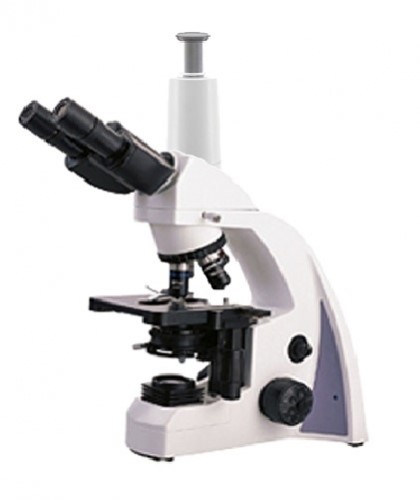Among the most important routines to maintain a microscope under proper operating conditions, are the following:
- Check the mechanical platform adjustment. It must move smoothly, in all directions (X-Y) and must maintain the position selected or defined by the microscopist.
- Check the adjustment of the focusing mechanism. The approach selected by the microscopist must be maintained. The height assigned by the microscopist should not vary.
- Check the operation of the diaphragm.
- Clean all mechanical components.
- Lubricate the microscope according to the manufacturer’s recommendations.
- Confirm the adjustment of the fi xed fingernail.
- Check the optical alignment.
Special care in warm climates
In both hot and dry climates, the main problem that affects the microscope is dust, since it affects the mechanical parts and the optical systems. This problem can be controlled through the following processes:
- Always protect the microscope with a plastic cover, when not in use.
- Clean the microscope with air, using a rubber bulb, at the end of the work shift.
- Clean the lenses with a camel hair brush or air brush. If the powder remains attached to the optical surface, try to remove it with special paper for lenses, but rubbing the surface very softly, to avoid scratches.
Special care for humid climates
In humid climates, usually hot, microscopes are usually affected by fungi, which are formed mainly on the surface of the lens, in the screw slots and under the protective paint. If the equipment is not adequately protected, it could become unusable in the very short term. The care shown below helps prevent the formation of fungi:
- Store the microscope at night in a box equipped with an electric bulb that does not exceed 40 W of power. The bulb should be installed on the top of the box, near the binocular head and should be on all night. The box must have holes to allow air circulation. It must be avoided that the temperature inside the box does not exceed 50 ° C, so that the properties of the lubricants of the microscope are not affected.
- If it is not possible to use the box with the electric bulb, alternatively a desiccant material such as silica gel or rice can be used. When using the desiccating agent, verify that the microscope is stored in a box or protected with a protective cover that can be manufactured in fabric with characteristics similar to that of handkerchiefs. Verify that the drying agent is in good condition; Otherwise, replace it or regenerate it.
- Clean the microscope periodically. Wear latex gloves if you have to touch the lenses. This prevents fingerprints from adhering to the surface and decreases the risks or probability of mushroom growth where the fingerprints were imprinted.
- If none of the alternatives mentioned is feasible, place the microscope in a place that has good air circulation. When the microscope is not in use, it could be placed under sunlight directly, for short periods of time. This reduces the humidity and the risk of mushrooms growing on the surfaces of the equipment.
- Air conditioning – temperature and humidity control – significantly prevents the growth of fungi in microscopes. However, this is not an option that has a large number of laboratories. If the air conditioning service is not continuous in the area where the microscope is installed, precautions should be taken to control the humidity.
At Kalstein we offer you innovative microscopes that will allow you to offer the best laboratory analysis since they have the best technology. That’s why we invite you to take a look at our available microscopes HERE

